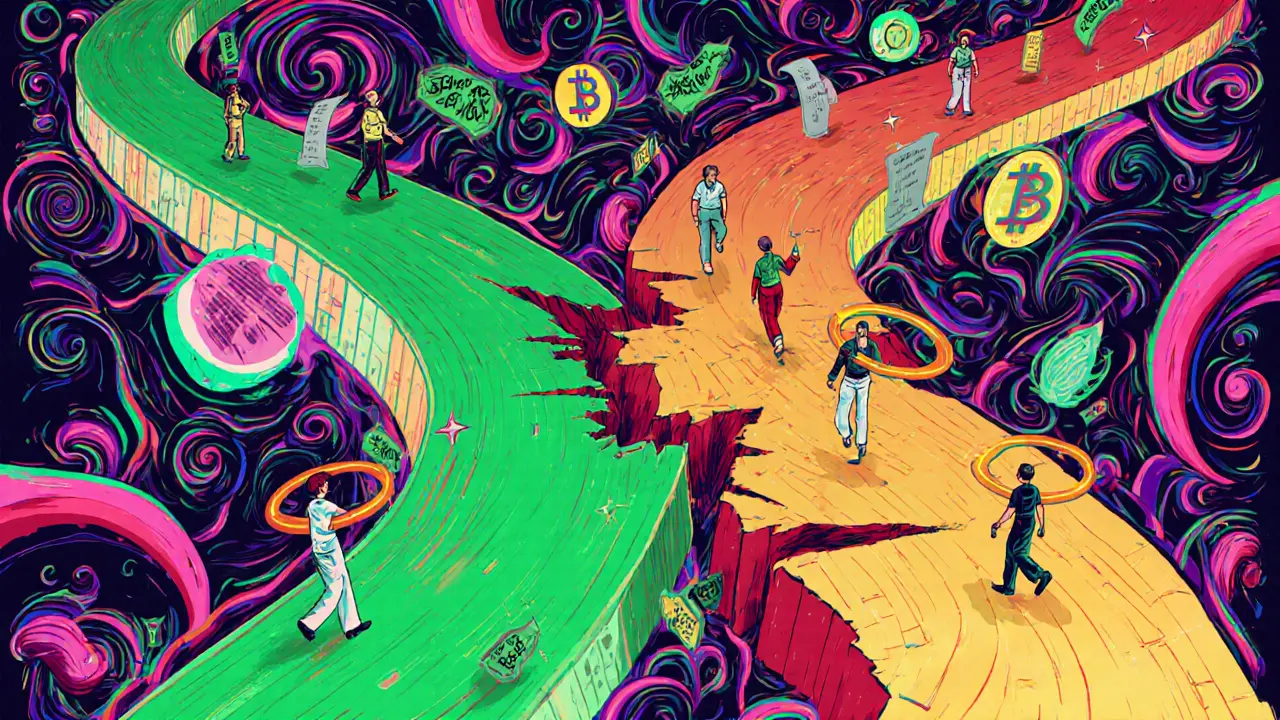Blockchain Upgrade: What It Means and How It Changes Crypto
When a blockchain upgrade, a planned change to the underlying protocol of a blockchain network that alters how transactions are processed, validated, or secured. Also known as network upgrade, it can make a crypto faster, cheaper, or more secure—or break everything if done wrong. This isn’t just tech jargon. Every time a blockchain upgrades, it changes how you hold, send, or use crypto. Some upgrades are smooth. Others cause chaos—like when users lost funds or got stuck on old chains.
There are two main types: hard fork, a backward-incompatible blockchain upgrade that splits the network into two separate chains and soft fork, a backward-compatible upgrade where old nodes still recognize new blocks. A hard fork is like rewriting the rules of a game and forcing everyone to play by the new ones—or leave. Ethereum’s Merge was a soft fork: it changed how blocks were created without breaking old wallets. Bitcoin Cash split off from Bitcoin in a hard fork because some devs wanted bigger blocks. If you held Bitcoin before that fork, you got Bitcoin Cash too. But not all forks give you free money—some just create confusion.
Behind every upgrade is a consensus mechanism, the system nodes use to agree on the state of the blockchain. Bitcoin uses Proof of Work. Ethereum switched to Proof of Stake. That change alone cut its energy use by 99.9%. Upgrades like this don’t just tweak code—they shift power. Miners lose influence. Validators gain it. Exchanges have to update. Wallets need patches. If you’re holding crypto, you’re not just watching—you’re part of the upgrade. Ignoring it can mean losing access to your funds, missing new features, or getting stuck on a dead chain.
Upgrades also tie into regulation. When the EU passed MiCA, it forced blockchain projects to document their upgrades clearly. That’s why you now see roadmaps for every major chain. It’s not just about tech—it’s about legal compliance. And if you’re in Qatar or India, where crypto rules are shifting fast, a blockchain upgrade might be the only thing keeping your assets usable.
What you’ll find below aren’t just articles about upgrades. They’re real stories of what happens when code changes: a token that vanished after a fork, an exchange that broke during a hard fork, a wallet that stopped working because no one updated the protocol. These aren’t theoretical risks. They’re what people lost money on. And if you don’t know the difference between a hard fork and a soft fork, you’re already behind.
What Happens During a Blockchain Fork: Soft, Hard, and How Communities Split
A blockchain fork splits the network into two versions when protocol rules change. Hard forks create new coins; soft forks upgrade without splitting. Success depends on community consensus, not just code.
